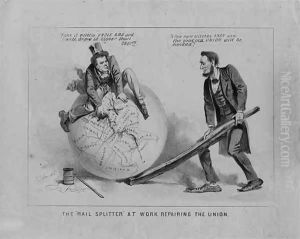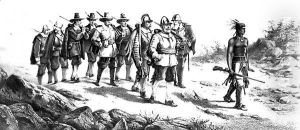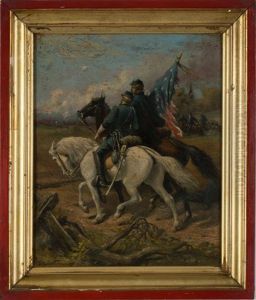Joseph E. Baker Paintings
Joseph E. Baker was not a widely recognized artist in the grand narrative of art history, and as such, specific details about his life and works are not extensively documented in historical records. However, he was an American lithographer and printmaker active in the late 19th and early 20th centuries.
Baker is often associated with the art of lithography, a printing process that was widely used during his time for commercial purposes, such as creating posters, maps, advertisements, and illustrations for books and newspapers. Lithography involves drawing an image with a grease-based medium on a limestone or metal plate, then treating the surface to retain ink only where the drawing exists.
During his career, Baker produced a variety of prints, many of which depicted scenes of American life, landscapes, and portraits. His works were characteristic of the period, reflecting the aesthetic preferences and technological advancements of the time. Baker's prints were likely disseminated widely due to the nature of lithographic production, which allowed for mass reproduction.
While Joseph E. Baker may not have been a trailblazer in the realm of fine arts, his contributions as a lithographer are part of the broader tapestry of American visual culture. His prints serve as historical documents that offer insights into the visual and material culture of the United States during his lifetime.
The year 1914 marked the end of Baker's life, and by that time, the art world was on the cusp of dramatic changes with the advent of modernism. Baker's work remains a testament to the commercial and illustrative art that preceded these shifts and provides a window into the everyday aesthetics and technologies of printmaking in the 19th and early 20th centuries.


